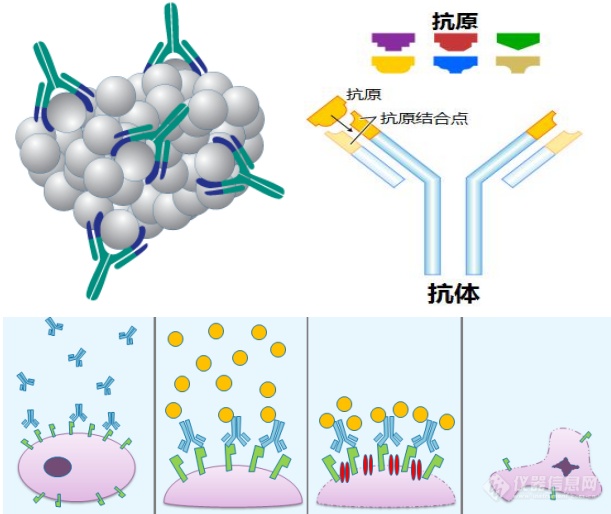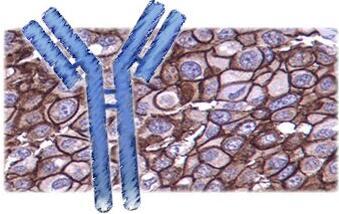
G蛋白偶联受体27抗体
产品编号 LM13528R
英文名称 GPR27
中文名称 G蛋白偶联受体27抗体
别 名 G protein coupled receptor 27; GPR 27; GPR27; GPR27_HUMAN; Probable G protein coupled receptor GPR27; Probable G-protein coupled receptor 27; SREB 1; SREB1; Super conserved receptor expressed in brain 1; GPCR GPR27.
研究领域 细胞生物 神经生物学 信号转导 G蛋白偶联受体 G蛋白信号
抗体来源 Rabbit
克隆类型 Polyclonal
交叉反应 Human, Mouse, Rat, Cow,
产品应用 ELISA=1:500-1000 IHC-P=1:400-800 IHC-F=1:400-800 Flow-Cyt=3μg/Test ICC=1:100-500 IF=1:100-500 (石蜡切片需做抗原修复)
not yet tested in other applications.
optimal dilutions/concentrations should be determined by the end user.
分 子 量 40kDa
细胞定位 细胞膜
性 状 Lyophilized or Liquid
浓 度 1mg/ml
免 疫 原 KLH conjugated synthetic peptide derived from human SREB1:251-350/375 <Extracellular>
亚 型 IgG
纯化方法 affinity purified by Protein A
储 存 液 0.01M TBS(pH7.4) with 1% BSA, 0.03% Proclin300 and 50% Glycerol.
保存条件 Store at -20 °C for one year. Avoid repeated freeze/thaw cycles. The lyophilized antibody is stable at room temperature for at least one month and for greater than a year when kept at -20°C. When reconstituted in sterile pH 7.4 0.01M PBS or diluent of antibody the antibody is stable for at least two weeks at 2-4 °C.
PubMed PubMed
产品介绍 G protein-coupled receptors (GPRs) are a protein family of transmembrane receptors that transmit an extracellular signal (ligand binding) into an intracellular signal (G protein activation). GPR signaling is an evolutionarily ancient mechanism used by all eukaryotes to sense environmental stimuli and mediate cell-cell communication. GPRs all have seven membrane-spanning domains and extracellular loops that can be glycosylated. These extracellular loops also contain two highly conserved cysteine residues which create disulfide bonds to stabilize the receptor structure. SREB1 (super conserved receptor expressed in brain 1), also known as GPR27 (G protein-coupled receptor 27), belongs to the SREB subfamily of GPRs that are expressed in the central nervous system. SREB1 may function as an amine-like GPR.
抗原与抗体的关系
①抗体和相应的抗原结合后,可以促进白细胞的吞噬作用而将抗原消除,使抗原失去致病作用。
②一种抗体只能抵抗一种抗原,而且一种抗体只能受相应的抗原刺激后才能形成。
免疫的功能:
免疫具有三方面的功能:
①防御功能:抵抗抗原的侵入、防止疾病的产生。
②自我稳定:清除体内衰老、死亡和损伤的细胞。
③免疫监视:监视、识别和清除体内产生的异常细胞。
特别提醒:过敏反应:当人体抵抗抗原侵入的功能过强时,在过敏原(引起过敏反应的物质,如某些食物、药物)的刺激下,人体就会发生过敏反应。
1.抗体名称容易出错
抗体一般以抗原来命名,名称核对时最简单也最容易犯错,有些蛋白质有不同亚基(HIF-1α、HIF-1β);有些蛋白质有不同磷酸化状态,例如EGFR和p-EGFR的区别,等等。
除了蛋白质的名称外,有其他后缀。
2.多抗和单抗不同
单抗上面介绍过了,而多抗(polyclonal antibodies)一般用兔子、山羊等大型动物,因为多抗是直接从血液中纯化提取出来的,而不像单抗是用细胞培养出来的。
单克隆抗体的优点是产量持续稳定、特异性较高、但灵敏度不如多抗。如果对抗体的特异性要求高,用量较大或需要长期使用一致的抗体,制备的抗体应用要求多(WB/IP/IF/ICC等),可以选择单克隆抗体。
多抗的特异性较差,存在批间差(因为兔子的血被放光挂掉了,而山羊可以常年养着,放点血出来,在养几天再放血,好残忍),易造成背景,例如在WB中有杂带,在IHC中背景较深等等。但由于多抗识别多个抗原表位,对于丰度偏低的蛋白也更容易检出。
![]()
![]()
























